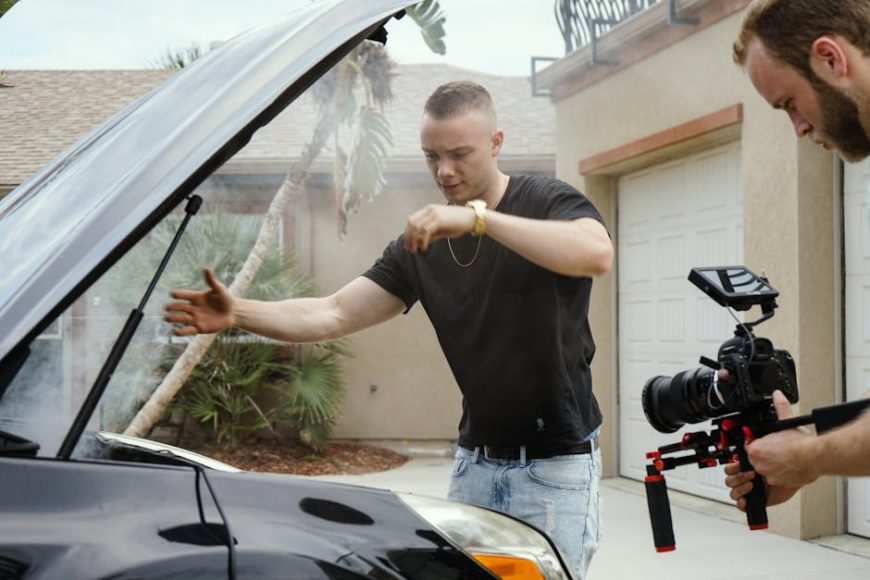- August 22, 2024
- By
- In Uncategorized
- 190
- 0

Breaking down while traveling can be a daunting experience, especially if you’re in an unfamiliar area or on a tight schedule. However, with the right preparation and knowledge, you can handle such situations smoothly. This blog will guide you through the steps to take when you face a brake down, ensuring your safety and helping you get back on the road as quickly as possible.
The moment you realize your vehicle is breaking down, it’s crucial to maintain your composure. Resist the panic that may come naturally and instead, focus on safely bringing your vehicle to a stop. This is often easier said than done, particularly if you’re on a busy road or motorway. Your first goal is to signal your intentions to other drivers by turning on your hazard lights. This universal symbol alerts others to your predicament, providing them with the opportunity to give you space and time to maneuver.
After successfully moving your vehicle off the roadway, your next step involves making your vehicle as visible as possible. Even in daylight, activating your vehicle’s parking lights can enhance visibility. If it’s night time or visibility is compromised, consider using a flashlight or your phone’s flashlight feature to alert passersby and oncoming traffic to your presence. Safety triangles, if available, should be placed at a safe distance behind your vehicle to further signal distress.
Once your vehicle is safely off the road and made visible, evaluate your surroundings carefully. If you’re on a busy highway, it’s usually safer to remain inside your vehicle with the doors locked. Exiting your vehicle can be hazardous, particularly if traffic is moving swiftly around you. Should you find yourself in a remote or poorly lit area, staying inside your car, keeping the doors locked, and windows up can provide an added layer of security while you wait for help to arrive.
There’s an important caveat to staying inside your vehicle, however. If your car is emitting smoke or you smell gasoline, exit the vehicle immediately and move to a safe distance. In these scenarios, the risk of fire may outweigh the dangers of being near traffic. Always err on the side of caution and prioritize your immediate safety over the protection of your vehicle.
After ensuring you and your passengers are safe, take a moment to assess the nature of the brake down. Some issues, like a flat tire or depleted battery, can be addressed with the tools and knowledge many drivers possess. However, it’s essential to undertake such tasks only if you’re confident in your ability to perform them safely, without exposing yourself or your passengers to danger from oncoming traffic or other risks.
For more complex issues that are beyond your abilities or if you’re unsure what’s wrong, it’s wise to seek professional help. Roadside assistance services are invaluable in these instances, providing not only technical support but also peace of mind. Remember, attempting to fix a mechanical problem without the right skills could worsen the situation or even lead to injury.
In situations where DIY fixes are not plausible, reaching out to a professional towing service or roadside assistance is your best bet. Modern roadside assistance services offer a range of solutions, from towing to on-the-spot repairs for minor issues. When calling for help, be prepared to provide as much information as possible about your location and the nature of your vehicle’s problems.
If you’re a member of an auto club or have roadside assistance through your vehicle’s warranty or your insurance, you’ll usually have a contact number on hand for these situations. If not, local tow services can be found with a quick search on your mobile device. Payment methods and fees should also be clarified beforehand to avoid any confusion once help arrives.
The old saying, ‘An ounce of prevention is worth a pound of cure,’ holds especially true for avoiding future brake downs. Regular maintenance checks are the cornerstone of vehicle reliability. Ensure your car undergoes routine inspections and maintenance, including oil changes, tire rotations, and brake checks. These steps can significantly reduce the likelihood of unexpected problems on the road.
Moreover, staying informed about your vehicle’s condition and being proactive about any warning signs is critical. Unusual noises, changes in handling, or warnings on your dashboard should not be ignored. Addressing these issues promptly can often prevent a more serious breakdown later. Keeping a well-stocked emergency kit in your vehicle, including tools for minor repairs, can also prepare you to handle small issues on your own, should they arise.
Facing a brake down while traveling doesn’t have to be a nightmare scenario if you’re prepared and know how to respond. By staying calm, assessing the situation, ensuring your safety, reaching out for help, and taking preventative measures for the future, you can navigate these challenges with ease. Remember, the key is to stay informed and ready for the unexpected, ensuring that even if you encounter issues on the road, they don’t derail your travels.